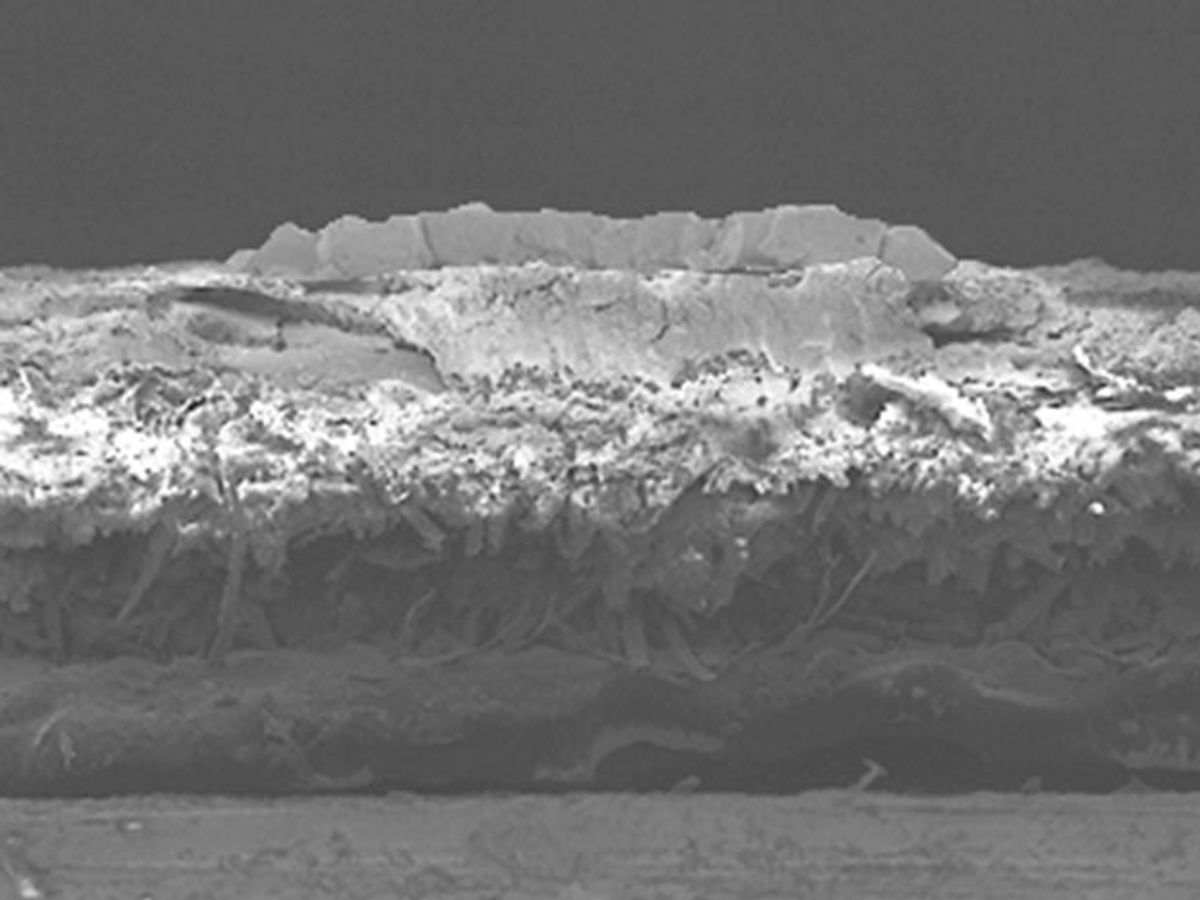A team based at the National Taiwan University in Taipei has used a combination of inkjet and screen printing to make small resistive RAM memory cells on paper. These are the first paper-based, nonvolatile memory devices, the team says (nonvolatile means that the device saves its data even when it's powered down).
As Andrew Steckl outlined in his feature for IEEE Spectrum last year, paper has a lot of potential as a flexible material for printed electronics. The material is less expensive than other flexible materials, such as plastic. It boasts natural wicking properties that can be used to draw fluids into sensors. And it can be easily disposed of by shredding or burning.
Basic circuit components, such as wires, resistors, capacitors, transistors and diodes, have been printed on paper. But memory is one of the last frontiers, says graduate student Der-Hsien Lien, and it will be needed if we expect paper electronics to perform computation and store data.
Lien and his colleagues tackled the problem by setting out to build resistive RAM, or RRAM, memory cells. In this memory, the cell is sandwiched between two electrodes. An applied voltage pulls ions from one of the electrodes in the cell, which lowers the cell's resistance.
In this case, the team constructed memory cells first using screen printing to coat paper with a layer of carbon paste that would serve as the bottom electrode. An inkjet printer was then used to print lines consisting of titanium oxide nanoparticles. After those lines had dried, they formed top electrodes by depositing small dots of silver atop the nanoparticles.
The team conducted various tests to confirm the cells could switch between states by applying a positive or negative voltage and performed reliability tests to confirm that the memory cells retained their behavior even after the paper had been bent. The results were presented last Wednesday at the Symposium on VLSI Technology in Honolulu, Hawaii.
Lien reported memory cells as small as 50 micrometers. These could potentially be packed together to store about 1000 bits per centimeter, which amounts, Lien says, to about 1 MB on a single side of a sheet of standard A4 paper. But the team reckons better inkjet printers, which are now capable of printing submicrometer features, could increase that memory capacity to 1 GB.
The capacity could go further still by building memory cells at the intersections of crossed lines (an approach that's dubbed crossbar memory). Crossbar structures should prove easier to stack, which means that even more cells could be packed in a given area in three dimensions, says Jr-Hau He, one of the team leaders.
The team is now looking for a partner who can help build the electronics associated with storing and reading information in the memory cells.
Rachel Courtland, an unabashed astronomy aficionado, is a former senior associate editor at Spectrum. She now works in the editorial department at Nature. At Spectrum, she wrote about a variety of engineering efforts, including the quest for energy-producing fusion at the National Ignition Facility and the hunt for dark matter using an ultraquiet radio receiver. In 2014, she received a Neal Award for her feature on shrinking transistors and how the semiconductor industry talks about the challenge.




